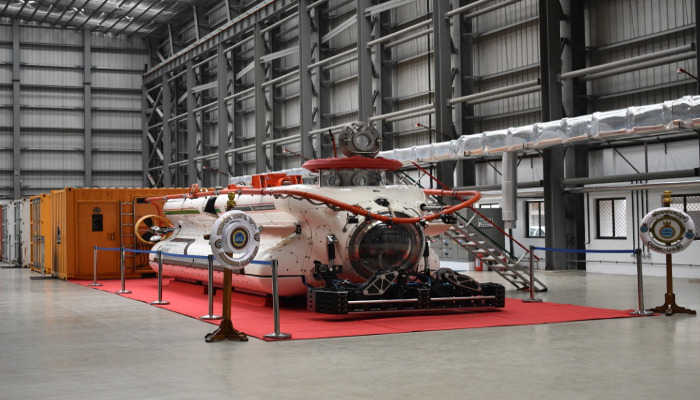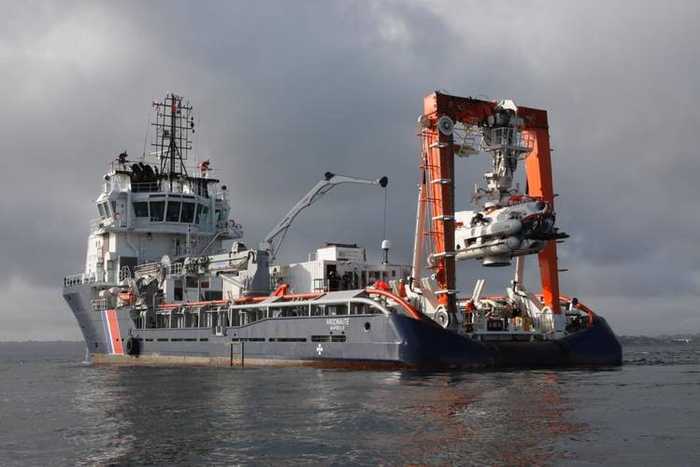Published 17:08 IST, February 22nd 2024
The Deep Submergence Rescue Vehicle played the most important role in locating the long-lost submarine, which was sunk by INS Rajput.
Advertisement
Milan 2024: The Indian Navy's underwater search and rescue capabilities have recently led to the discovery of the wreckage of the Pakistani submarine PNS Ghazi (leased from the United States) near the east coast of Visakhapatnam, along with submarines from other countries as well. Among the wreckage discovered are submarines from Japan and Australia, alongside Pakistan's, making Vizag a true submarine ‘graveyard.
The Deep Submergence Rescue Vehicle (DSRV) played the most important role in locating the long-lost submarine, which was sunk by Indian destroyer INS Rajput, as per Indian claims, during the Indo-Pak war in December 1971, claiming the lives of all 93 personnel on board.
Advertisement
Echoes of 1971 War: Navy Discovers Wreck of Pakistani Submarine Ghazi
Media reports quoting senior officials from the Indian Navy's Submarine Rescue Unit stated, “We have located the Ghazi using a Deep Submergence Rescue Vehicle (DSRV). The discovery was made just a few nautical miles off the Visakhapatnam coast, but we do not touch it out of respect for those who perished, in keeping with the true traditions of the Indian Navy.”

The Navy recently developed this particular capability, which is considered crucial for mapping unexplored ocean currents and providing navigation support for the Indian Navy's underwater platforms (submarines and unmanned underwater vessels). Visakhapatnam's deep inlets, with an average depth of about 16 metres, offer anchorage for sea-faring ships and enable submarines to operate in close proximity to the coast. It was this unique geographical advantage that led the ill-fated Pakistani Navy submarine PNS Ghazi to patrol near the Vishakhapatnam coast during the 1971 war with India, reports added.
Advertisement
While the Indians attribute the sinking of PNS Ghazi to INS Rajput, Pakistan contends that the incident was caused by an internal explosion and mines deployed by India to safeguard the Visakhapatnam port.
Japanese and Australian Submarines Rest in Vizag’s Submarine Cemetery
In addition to the discovery of PNS Ghazi, another important find lay on the Vizag seabed—a wreckage dating back 80 years. The Japanese submarine RO-110 was sunk during World War II by depth charges released by the Royal Indian Navy's HMIS Jumna and the Australian Navy's Ipswich.
Advertisement
India got DSRVs in 2018 to find sunken ships and submarines. With two DSRVs—one for the eastern and one for the western seaboard—India is equipped to deploy specialised technology for locating sunken vessels and conducting rescue operations. Currently, India is one of only 12 nations worldwide with this capability, alongside major maritime powers such as the US, China, Russia, and Singapore.

Further, the Navy plans to add two more indigenous diving support vessels (DSVs) from Hindustan Shipyard, Visakhapatnam. These vessels, as per reports, can go as deep as 650 metres.
Advertisement
About India's Indigenous Endeavour for DSVs

- Hindustan Shipyard, Visakhapatnam, launched two Diving Support Vessels (DSVs) for the Indian Navy on Sep 22, 2022.
- These DSVs, the first of their kind built indigenously at HSL, measure 118.4 metres in length, 22.8 metres at the broadest point, with a displacement of 9,350 tons.
- Primarily intended for deep-sea diving operations, they will be equipped with Deep Submergence Rescue Vehicles (DSRVs) for submarine rescue missions.
- Their capabilities extend to sustained patrolling, Search & Rescue operations, and conducting Helicopter Operations in high seas.
- The project will also have approximately 80 percent indigenous content, to encourage local employment and promote indigenisation.
16:37 IST, February 22nd 2024